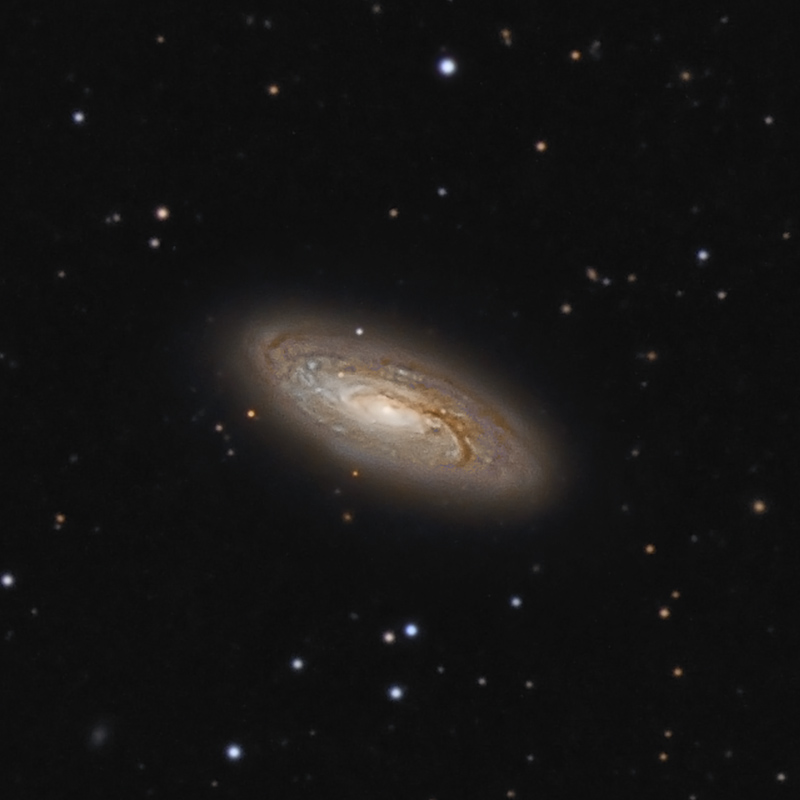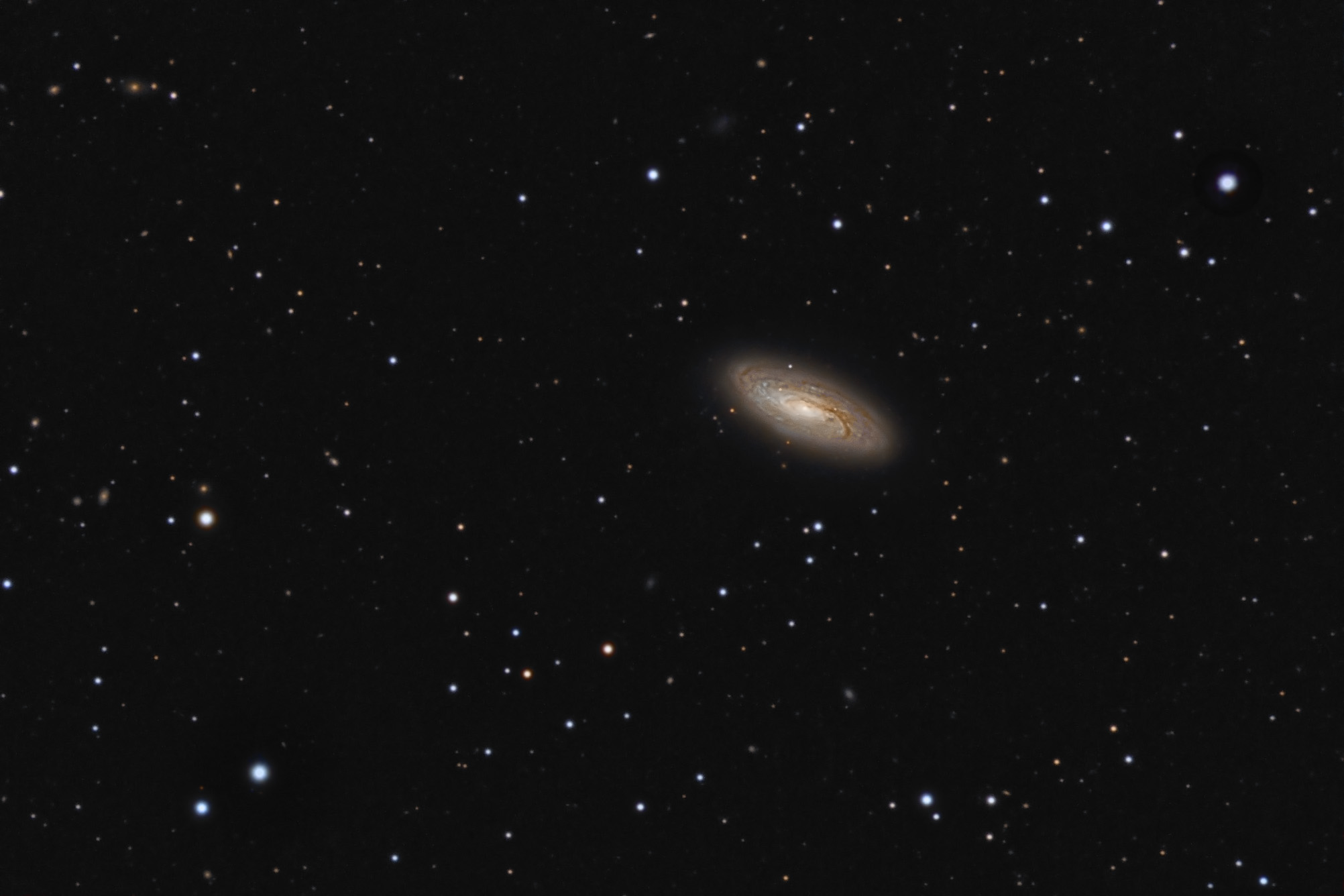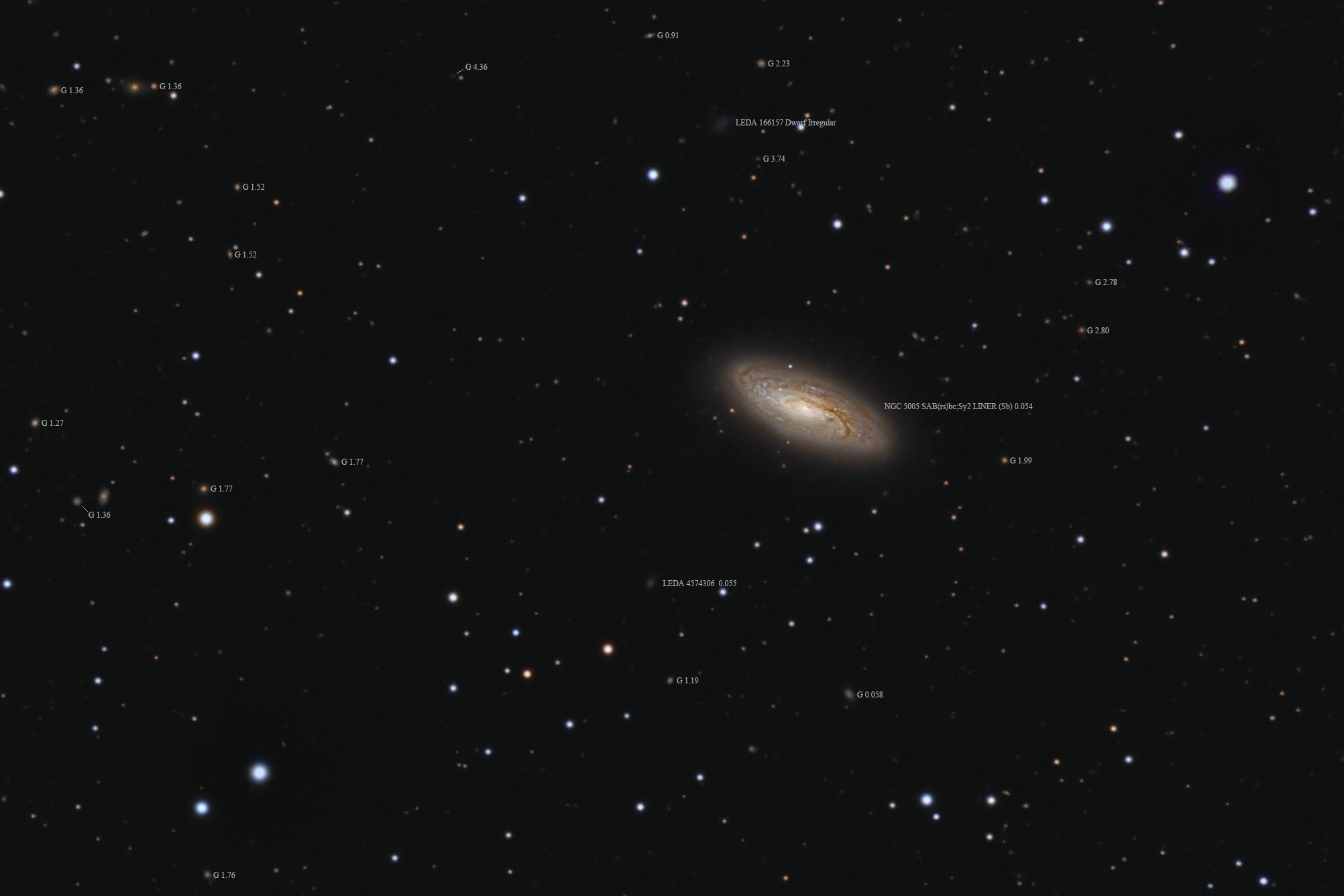| Description | Images |
Object name: NGC5005Designation(s): NGC5005, NGC 5005 is a bright spiral galaxy in Canes Venatici that's about 54 million light-years distant by redshift and 55 million by Tully Fisher measurements. A surprisingly close agreement. It is considered by some to be a companion to the much more famous, highly warped galaxy, NGC 5033 about 41 minutes to the southeast and thus out of my frame. NED classes NGC 5005 as SAB(rs)bc;Sy2 LINER while the NGC Project says, Sb (no bar). Most notes at NED refer to the bar saying it is offset from the major axis by 30 degrees. I see no hint of it visually. This is likely why the NGC Project doesn't recognize it. It seems rather dust red reddened. Is it the cause of NGC 5033's warp? It seems too normal for that. NGC 5033 has two satellite galaxies that might be a more likely candidate though it could be due to a galaxy it ate and no longer exists. Related Designation(s):1AXG J131056+3703, 1RXP J131056.3+370323, 1RXS J131056.3+370337, 2MASS J13105626+3703324, 2MASX J13105631+3703321, 2MASXi J1310562+370332, 2XMM J131056.3+370332, 2XMMp J131056.3+370332, 6C B130837.7+371914, 87GB 130837.6+371952, 87GB[BWE91] 1308+3719, AKARI J1310557+370333, B2 1308+37, CG 1098, CGCG 1308.6+3719, CGCG 189-035, CXO J131056.2+370331, CXO J131056.28+370332.0, FIRST J131056.2+370333, HDCE 0769 NED001, IRAS 13086+3719, IRAS F13086+3719, LDCE 0867 NED131, LGG 334:[G93] 003, LQAC 197+037 007, MCG +06-29-052, MG2 J131057+3704, NGC 5005, NGC 5005:[L2011a] X0001, NGC 5005:[RPS97] 01, NGC 5005:[RW2000] X-01, NGC 5033:[R97] 01, NGC5005, NSA 143082, NVSS J131056+370332, PGC 045749, RGB J1310+370, RX J1310.9+3703, RX J1310.9+3703:[BEV98] 019, RX J1310.9+3703:[ZEH2003] 01 , SSTSL2 J131056.17+370332.4, TXS 1308+373, UGC 08256, USGC U518 NED06, UZC J131056.5+370332, VLSS J1310.9+3703, [AHG2014] B196, [GMM2009b] 59, [M98j] 191 NED01, [RHM2006] SFGs 020, [VCV2001] J131056.3+370330, [VCV2006] J131056.3+370330, [WB92] 1308+3719, |


